Yoga mats — it’s the first thing that pops into my head as I watch Damian Michael unloading his survey gear from the back of the truck.
The long rolls of black and silver foam look exactly like yoga mats. Except instead of laying them on the forest floor for a few sun salutations and some downward-facing dog, we’re wrapping them around gum trees to search for reptiles on the floodplains of the Murrumbidgee River.
Herps on the Floodplain
I’ve joined Michael, a herpetologist at Australia’s Charles Sturt University, for an afternoon of fieldwork on a TNC-managed property in rural New South Wales, about five hours north of Melbourne.
Called Gayini by the local indigenous community, this land is in the heart of the Murray-Darling Basin, the breadbasket of Australia. Stretching across an area two and a half times the size of California, the basin boasts an agriculture industry worth $24 billion AUD annually.
But that industry comes with a cost. Farmers drained most of the region’s wetlands long ago, diverting the water toward agriculture. Little of the wild land that does remain is protected for conservation, but the wetlands here at Gayini are an exception.
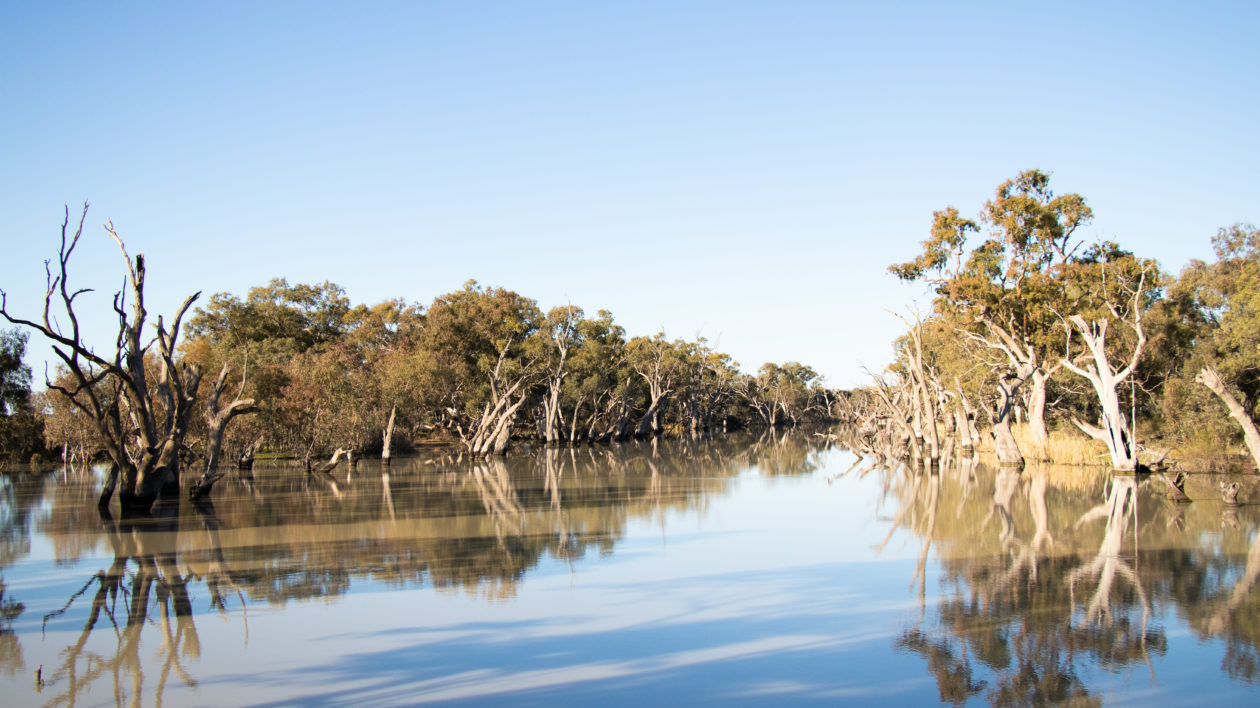
Michael and his college Gaye Bourke grab armfuls of curled foam, a tape measure, and various other sciencey odds and ends, and we traipse off into the forest alongside a creek. As we search for the perfect tree, Michael explains that many Australian reptiles—and even some bats—take shelter in the folds and crevices of tree bark.
The bark on the trunks of these stately, gnarled river red gums is thick and shaggy, sloughing slowly off the tree in limb-sized chunks. Higher up, the bark is skin-smooth, with a beautiful mottle blue and white pattern characteristic of many eucalypts.
Michael says that the trees evolved the coarse lower bark as a protective layer against fire. It’s also perfect habitat for small lizards and geckos, who can shelter from cold temperatures and predators within the folds.
But if you’re a herpetologist surveying for reptiles, this behavior poses a bit of a problem.
“The only way to find them is to pull all of the bark off a tree,” says Michael, “and you can only do that a few times before you alter the ecosystem.”
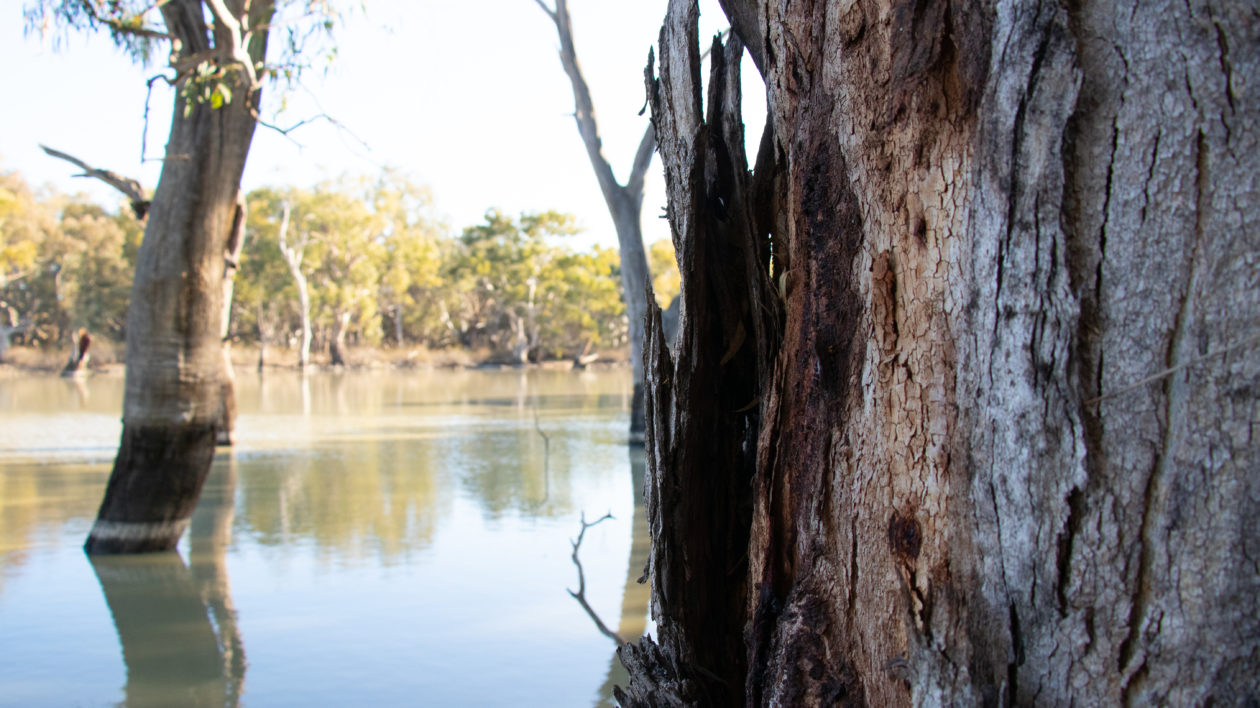
Scientists have been monitoring birds, reptiles and other species here at Gayini for more than 30 years. But Michael needed a solution to effectively survey for arboreal reptiles without destroying their habitat. So he decided to experiment with artificial bark covers, which wrap around trees to create a substitute habitat. New Zealand scientists use them to survey for wetta, and Michael thought the reptiles might take to them as well. Trials elsewhere in Australia went well, so it was time to deploy them here at Gayini.
We stop at the base of a good-sized red gum and Michael and Bourke set to work. The yoga matts (aka artificial bark covers) are easy to install, if a bit awkward. After measuring the tree’s diameter at breast height, Michael hooks a bungee cord on the bark, wedges the matt underneath, and then shimmies around the tree, hugging the matt against the bark, until he can reach the other side.
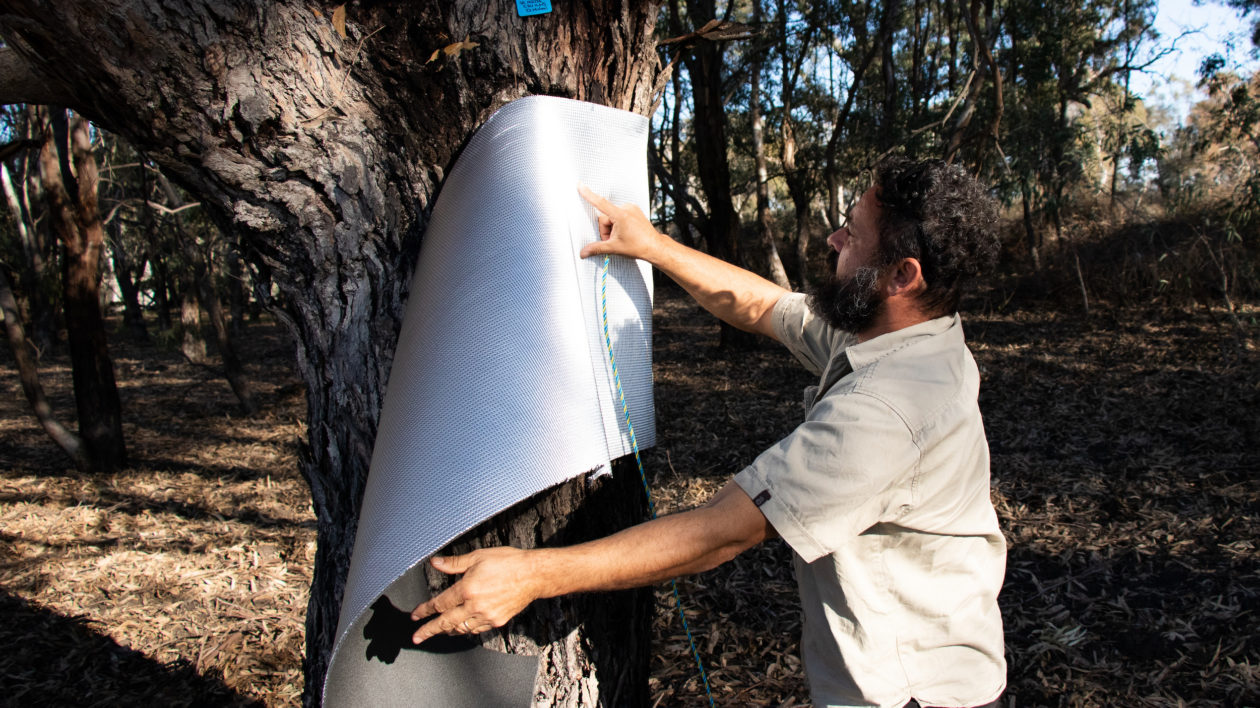
The bark cover’s resemblance to yoga mats isn’t coincidental, as Michael says both are made from closed-cell foam. This specific product is usually used for housing insulation, but it’s proven effective at providing a second home for reptiles. Skinks, geckos and lizards will crawl underneath the artificial bark, and scientists can easily peek under without harming the tree.
Here at Gayini, the team is looking for a handful of different species.
“There’s the wall skink, which also likes to hang around buildings,” says Michael. “It’s a shiny little lizard and it’s quite flat.” Apparently, there are two species of skink here, but identifying them is a bit challenging. “You need to flip them over and look at their fourth toe, one species has smooth toes and the other one keeled scales.”
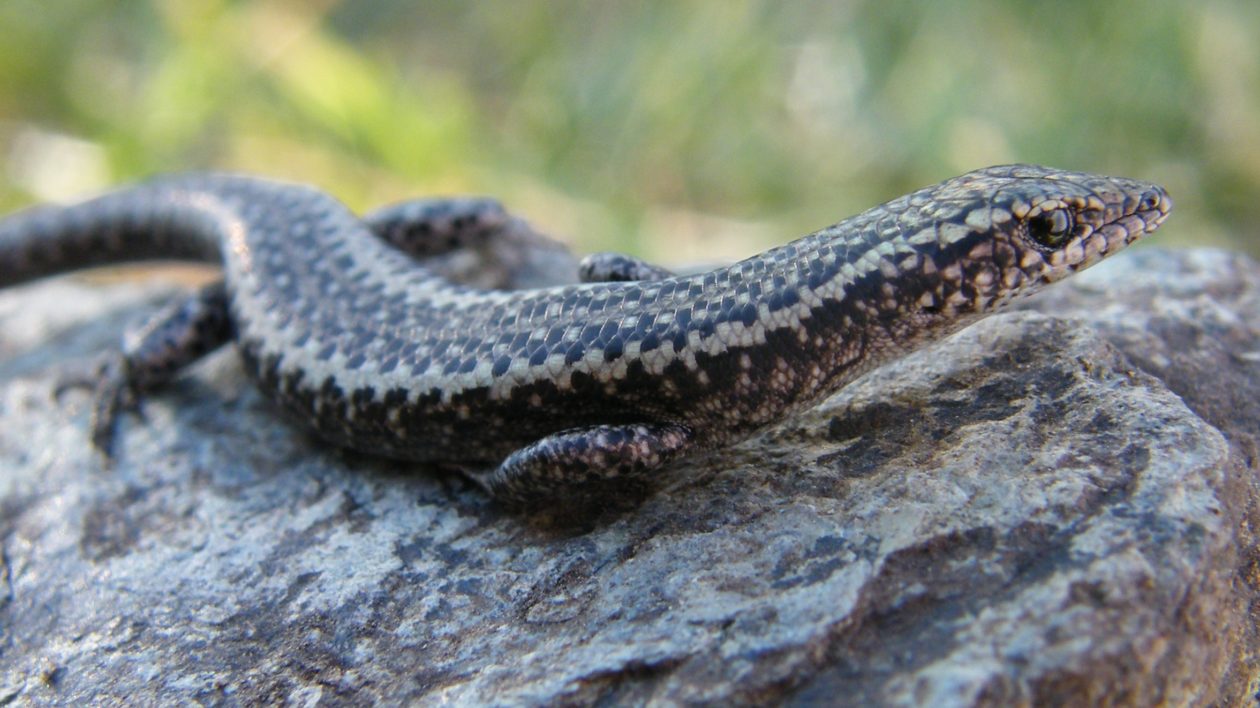
Other target species are the aptly named tree-crevice skink, which lives in loose family groups, and the marbled gecko.
Before we move on to the next site, Michael tries to find me a lizard or two without disturbing too much treebark. Unfortunately, the only thing he finds is a massive, palm-sized spider. I try not to grimace as I take a picture. “It’s a tree huntsman! And that’s just a small one,” says Michael, giggling with delight at my obvious reluctance to get too close.
As he bends down to return both bark and arachnid to the ground, the spider bolts towards his hand. We both jump back several feet, laughing. “Where did that spidey go?” he asks. Best not to think about it.
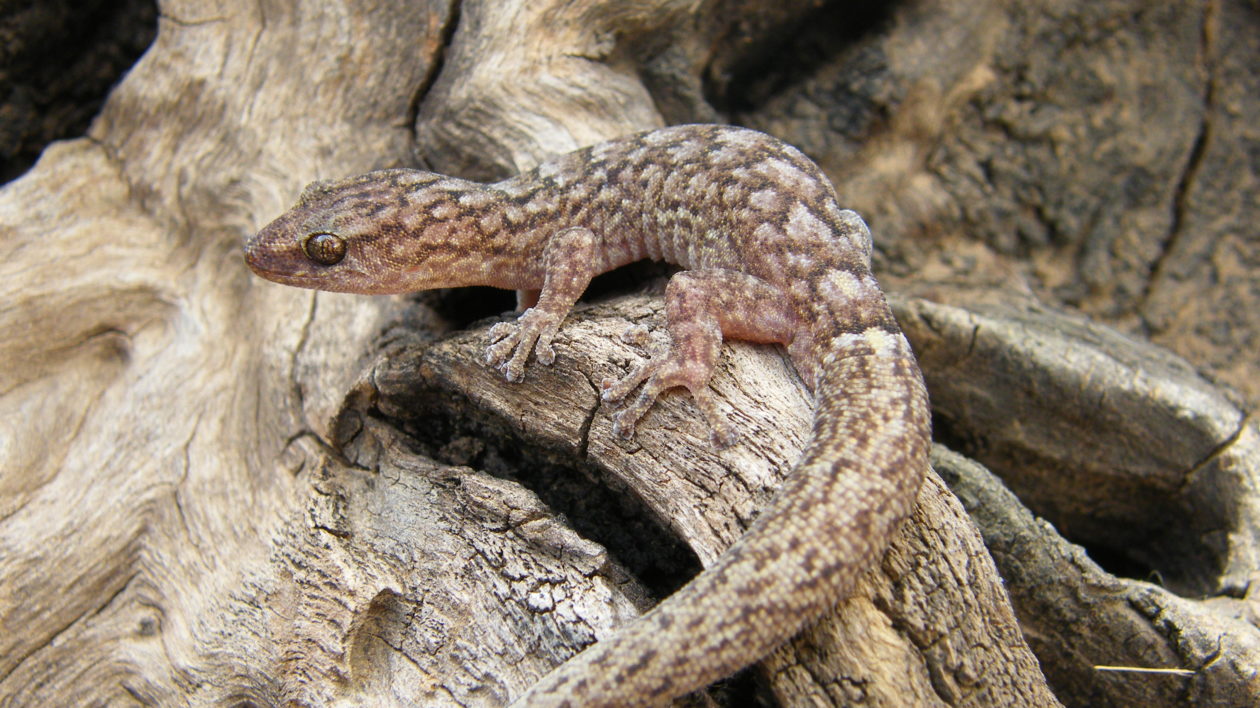
How Reptiles Respond to Floods
Michael and Bourke will return four times a year to check the bark covers. And that’s where things get interesting: when they find a skink or gecko, they’ll mark each individual with a special skin dye. In other words: lizard tattoos.
“It’s called visible implant elastomer, and it’s a little pigment that you inject under the skin,” explains Michael. He says that scientists use the technique on amphibians and fish, too. Each animal gets a special pattern and color combination of markings somewhere on their body, which allows Michael to tell where and when the reptile was caught previously. (Standard colors are red, orange, yellow, green, blue, purple, pink, black, white, and brown.)
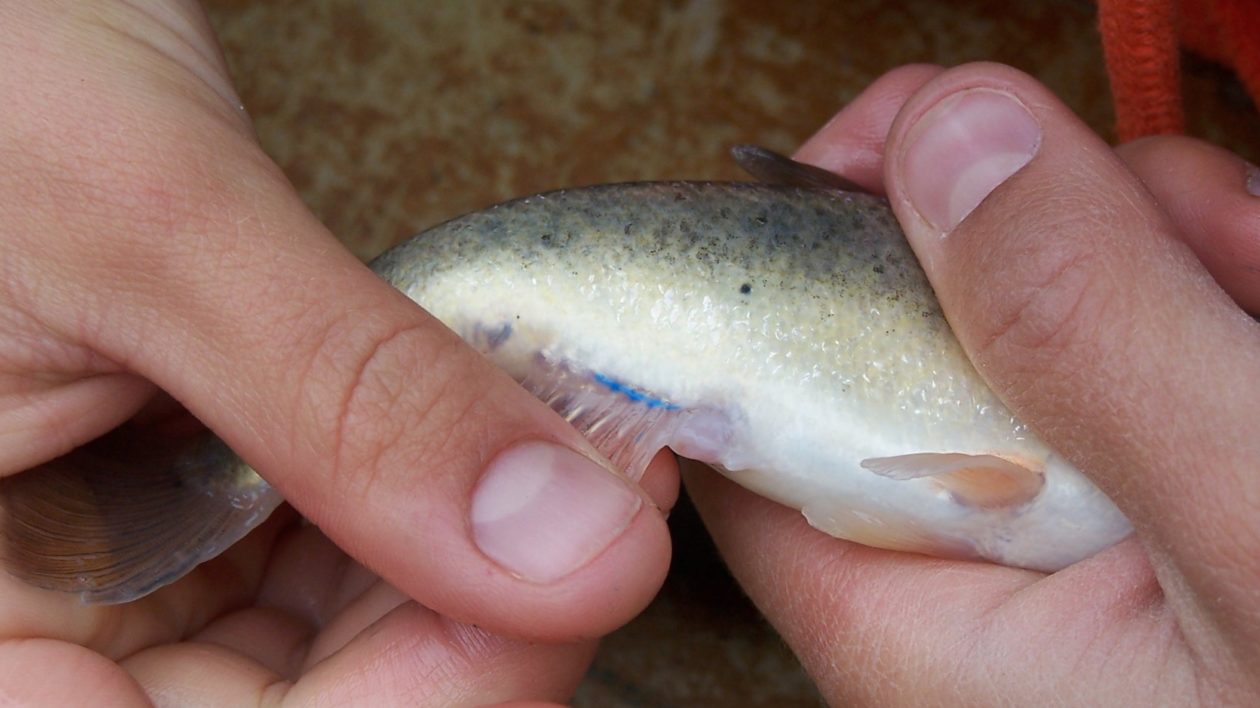
At the next tree, I ask Michael why exactly we’re so curious about these particular reptiles. “We have just about zero data on the distribution of these arboreal species through the floodplain,” he says, “so we just want to see what species we have out here, and do they actually colonize the bark substrate.”
Another aim is to understand how arboreal reptiles are responding to the land management at Gayini and elsewhere in the Riverina region.
For most of the past century, Gayini was managed as grazing land for cattle and sheep, along with some wheat production. Farmers converted much of the floodplains and wetlands into paddocks, diverting the natural flow of water with hundreds of miles of ditches and embankments.
In 2013, the landowners sold both land and water rights to the state government, which awarded management to a Nature Conservancy-led consortium, which includes the Nari Nari Tribal Council, the Murray Darling Wetlands Working Group, and the University of New South Wales (UNSW).
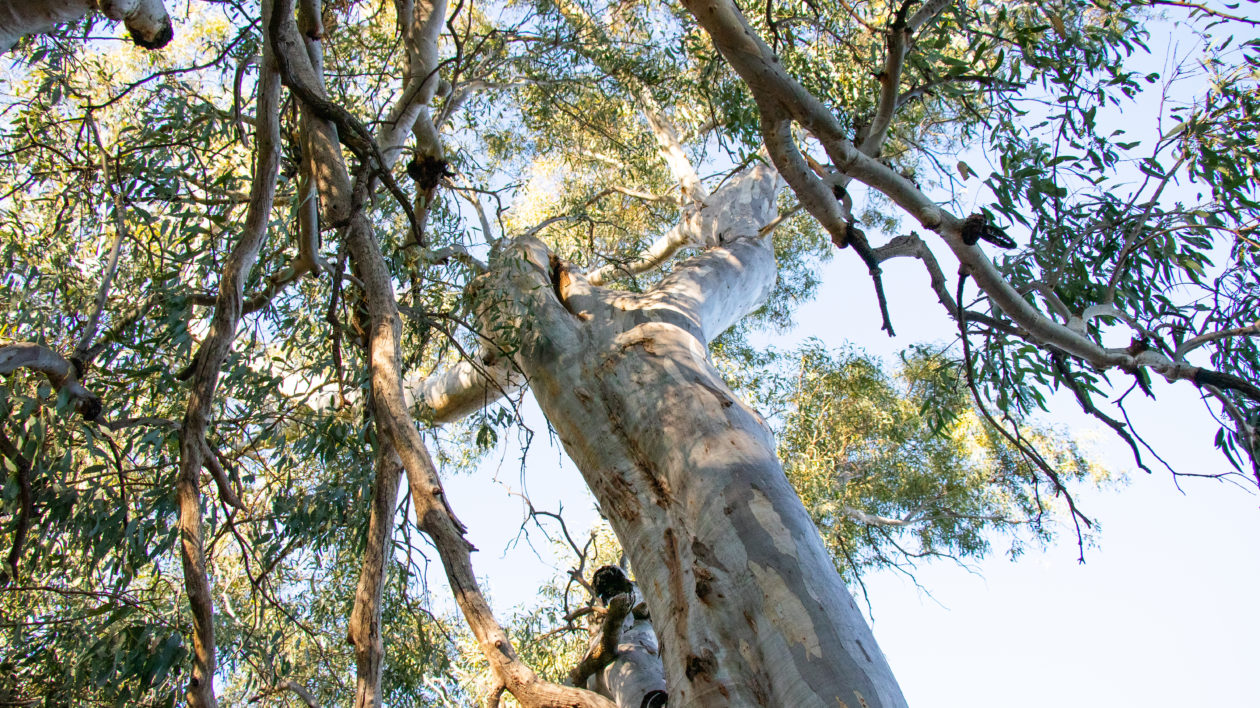
Conservation and indigenous culture will now play a major part in managing this country. Much of the recent work has hinged around bulldozing embankments and channels to allow for a more natural movement of water. And with three decades of scientific monitoring, the consortium will be able to see how wildlife responds to those changes.
By combining the survey data with flooding data, Michael hopes this study will help him understand how skinks and geckos respond to the water regime. Do they move from tree to tree? How far? And how does water affect that movement?
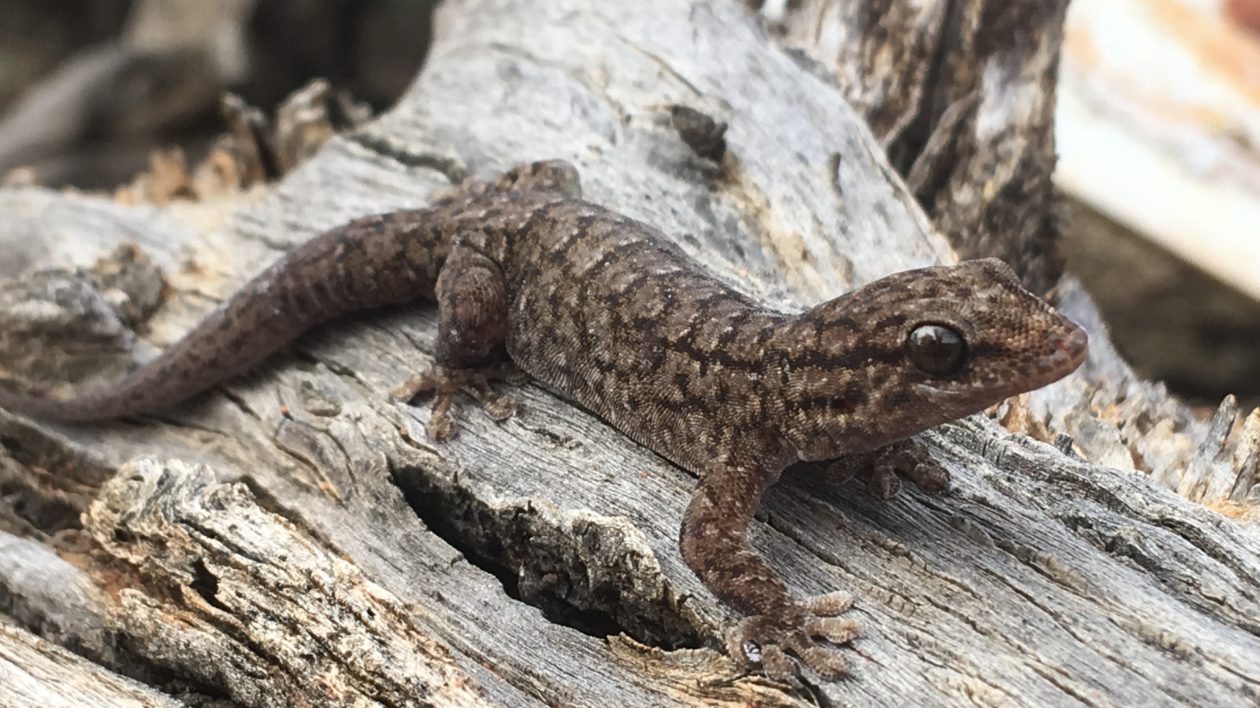
The sun is setting as we finish wrapping the last tree. Much to my chagrin we haven’t found any reptiles —- not even a python soaking up the last of the sun’s warmth. But Michael and Bourke will be back in a few months, armed with colorful pigments, to see who has taken up residence inside our bark covers.
And the next time my yoga instructor asks us tattooed yogis (myself included) to do the “lounge lizard” position, I’m probably going to start laughing.
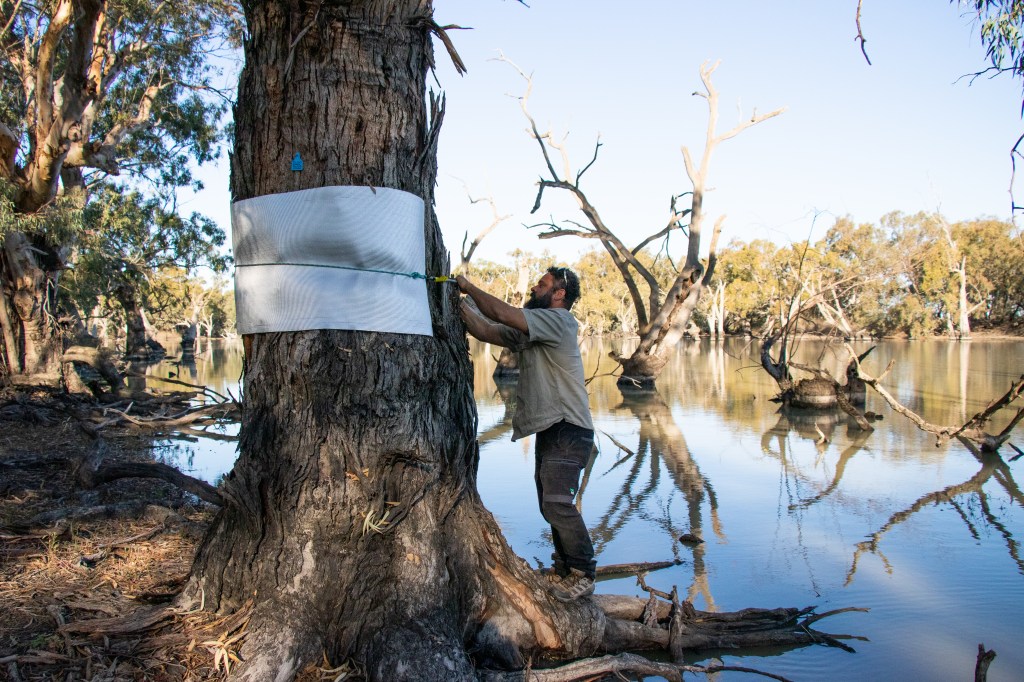



Join the Discussion